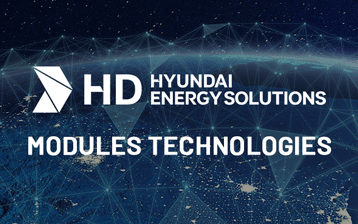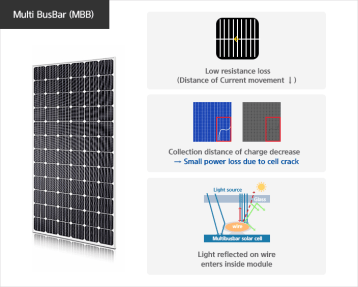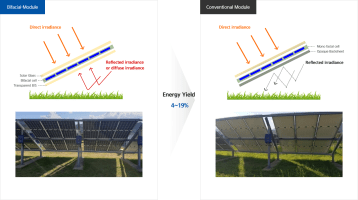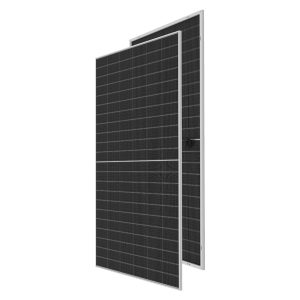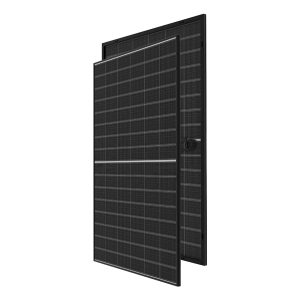HD Hyundai Energy Solutions, hig-efficiency modules supplier, always seeks for the best and most recent technologies to offer advanced products that can satisfy all customers’ needs.
Before putting them up for sale, Hyundai has the modules undergo several stringent tests in order to verify the quality, efficiency and durability of the photovoltaic modules. Let’s see the detial of the technologies used by Hyundai for their solar panels.
Shingled technology
The shingled technology is one of the latest-generation production methods that increases the efficiency of solar panels.
Photovoltaic modules are made up of overlayed cells: like shingles used in the past, the cells are stacked on top of one another, avoiding gaps between the cells. This type of interconnection is achieved through electrically conductive adhesives, which, unlike the traditional ribbons method ribbons, allow a greater efficiency by taking advantage of a larger surface area of the cells, resulting in a wider active area for the module.
Hyundai has been implementing this technology in all its modules for a while, offering increasingly modern and efficient products.
Multi-Busbar
In recent years, HD Hyundai Energy Solutions modules have also adopted multi-busbar technology, significantly reducing the risk of power loss due to cell cracks and ensuring stable energy generation performance by improving the flow of electric currents through metallic ribbons.
The cells in solar panels are connected by metal contacts through the application of thin metal strips called “busbars” on the front and back sides. These strips are designed to conduct the direct current produced by the cell. Multi-busbar cells reduce internal resistance losses and decrease the likelihood of micro-cracks forming between the bars, improving the overall performance of the photovoltaic module.
Big Size Wafer
In addition to adopting cutting-edge technologies, such as those listed above, Hyundai Energy Solutions has implemented the use of larger wafers to maximize the output of their photovoltaic cells, offering their customers the most advanced products.
Looking through all Hyundai modules series, it is possible to see that the cells size has increased from 156.75 mm² to 182 mm², resulting in greater power output and a decrease in production costs
Bifacial Technology
HD Hyundai Energy Solutions also offers bifacial modules, which can increase the energy generated up to 19% compared to monofacial modules, thanks to the light hitting also the back of the module.
In this case, the module can absorb solar energy from both sides of the photovoltaic cell, front and back. The reflectivity of the surface is indicated by the Albedo Factor, a measurement unit with a value from 0 to 1, which indicates the ratio between the incident and reflected solar radiation from a surface.
VP Solar supplies HD Hyundai Energy Solutions’ high-efficiency modules, contact us to receive more information or a special offer.
-
Hyundai, PV Modules
Hyundai HeteroMax – GH Series – HiT-HxxxGH – 715Wp
Bifacial, dual-glass module from Hyundai’s HeteroMax GH series, for C&I installations with High-End Heterojunction technology.
- Efficiency: 23.2 %
- 15 years product warranty
- 30 years performance warranty
- Available sizes: 715 Wp
SKU: n/a -
Hyundai, PV Modules
Hyundai HeteroMax Premium N-Type HJT – HiT-HxxxCE-BF – 450 Wp
Hyundai HeteroMax Premium N-Type HJT CE-BF series monocrystalline half-cut bifacial cells
- 23.0% High Efficiency
- High-End Heterojunction Technology
- Anodized aluminum alloy
- 30-Year product Warranty and performance Warranty
- Available: 450 Wp
SKU: n/a




